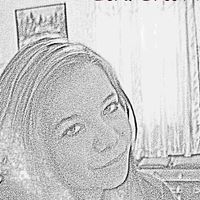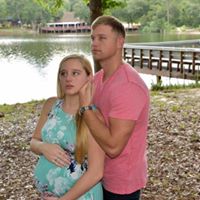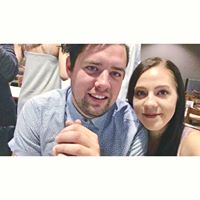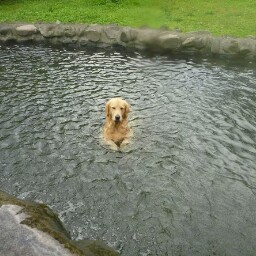Casey P Hare
age ~50
from Santa Barbara, CA
- Also known as:
-
- Patrick Hare Casey
- Hare P Casey
- Patrich Hare Casey
- Phone and address:
- 1204 Calle Del Sol, Santa Barbara, CA 93101
Casey Hare Phones & Addresses
- 1204 Calle Del Sol, Santa Barbara, CA 93101
- 612 De La Guerra St, Santa Barbara, CA 93103
- Goleta, CA
- Lexington, SC
- Broken Arrow, OK
- Tulsa, OK
Us Patents
-
Software Synchronization Of Multiple Scanning Probes
view source -
US Patent:6951130, Oct 4, 2005
-
Filed:Dec 17, 2004
-
Appl. No.:11/015945
-
Inventors:Casey Patrick Hare - Santa Barbara CA, US
Andrew Norman Erickson - Santa Barbara CA, US -
Assignee:Multiprobe, Inc. - Santa Barbara CA
-
International Classification:H01J003/14
-
US Classification:73105, 250307, 250306
-
Abstract:A method and apparatus for scanning multiple scanning probe microscopes in close proximity, to scan overlapping scan areas at the same time while avoiding collision employs a control system providing drive signals to a first Atomic Force Microscope (AFM) and calculated drive signals to additional AFMs based on the first drive signals and the relative position of the additional AFMs to the first AFM for consistent spaced motion. Scanning and Failure Analysis (FA) probing of multiple feature of interest using multiple APMs allows for reduced time for locating FA features to set up measurements.
-
Deconvolving Tip Artifacts Using Multiple Scanning Probes
view source -
US Patent:7415868, Aug 26, 2008
-
Filed:Mar 20, 2006
-
Appl. No.:11/385102
-
Inventors:Casey Patrick Hare - Santa Barbara CA, US
Andrew Norman Erickson - Santa Barbara CA, US -
Assignee:Multiprobe, Inc. - Santa Barbara CA
-
International Classification:G01B 5/28
-
US Classification:73105, 250306, 250307
-
Abstract:The present invention comprises an apparatus and a method for using multiple scanning probes to deconvolve tip artifacts in scanning probe microscopes and other scanning probe systems. The invention uses multiple scanning probe tips of different geometries or orientations to scan a feature, such as a semiconductor line or trench, and to display the scan data such that tip artifacts from each tip can be omitted from the measurement by data from the other tips.
-
Software Synchronization Of Multiple Scanning Probes
view source -
US Patent:7444857, Nov 4, 2008
-
Filed:Sep 29, 2005
-
Appl. No.:11/240090
-
Inventors:Casey Patrick Hare - Santa Barbara CA, US
Andrew Norman Erickson - Santa Barbara CA, US -
Assignee:Multiprobe, Inc. - Santa Barbara CA
-
International Classification:G01B 5/28
-
US Classification:73105, 250306, 250307
-
Abstract:A method and apparatus for scanning multiple scanning probe microscopes in close proximity, to scan overlapping scan areas at the same time while avoiding collision employs a control system providing drive signals to a first Atomic Force Microscope (AFM) and calculated drive signals to additional AFMs based on the first drive signals and the relative position of the additional AFMs to the first AFM for consistent spaced motion. Scanning and Failure Analysis (FA) probing of multiple feature of interest using multiple APMs allows for reduced time for locating FA features to set up measurements.
-
Software Synchronization Of Multiple Scanning Probes
view source -
US Patent:20040025578, Feb 12, 2004
-
Filed:Jul 7, 2003
-
Appl. No.:10/615223
-
Inventors:Casey Hare - Santa Barbara CA, US
Andrew Erickson - Santa Barbara CA, US -
International Classification:G01N013/16
-
US Classification:073/105000
-
Abstract:A method and apparatus for scanning multiple scanning probe microscopes in close proximity, to scan overlapping scan areas at the same time while avoiding collision employs a control system providing drive signals to a first Atomic Force Microscope (AFM) and calculated drive signals to additional AFMs based on the first drive signals and the relative position of the additional AFMs to the first AFM for consistent spaced motion. Scanning and Failure Analysis (FA) probing of multiple feature of interest using multiple APMs allows for reduced time for locating FA features to set up measurements.
-
Electronic-Chemometric Controlled System And Process For The Analysis Of Analytes
view source -
US Patent:20120225493, Sep 6, 2012
-
Filed:Aug 17, 2010
-
Appl. No.:13/390664
-
Inventors:Brian D. Piorek - Santa Barbara CA, US
Carl D. Meinhart - Santa Barbara CA, US
Seung Joon Lee - Santa Barbara CA, US
Casey Hare - Santa Barbara CA, US
Norman Douglas Bradley - Santa Barbara CA, US -
Assignee:SpectraFluidics, Inc. - Goleta CA
-
International Classification:G01J 3/28
G01J 3/44
G01N 33/53
H01J 49/26 -
US Classification:436501, 25033901, 250281, 250372, 250282, 356301, 356402, 422 69
-
Abstract:A series of electronic-chemometric control processes to enhance the selectivity, concentration, analysis, and detec tion of chemical species (analytes) in the gas phase, such as when using SERS-based techniques. Controls consist variously of: 1) feedback of electronic signals corresponding to changes of static and variable parameters in targeted chemical species that vary according to a reduction, increase, maximization, linearization, or improved confidence in one or more chemometric output parameters; 2) methods for spatially locating the source of an analyte species; and, 3) variable duty cycling to save power and materials according to altered physical and environmental conditions within a monitored zone.
-
Sers-Active Absorbers For The Analysis Of Analytes
view source -
US Patent:20120236304, Sep 20, 2012
-
Filed:Oct 14, 2010
-
Appl. No.:13/501716
-
Inventors:Seung Joon Lee - Santa Barbara CA, US
Brian D. Piorek - Santa Barbara CA, US
Carl D. Meinhart - Santa Barbara CA, US
Casey Hare - Santa Barbara CA, US
Norman Douglas Bradley - Santa Barbara CA, US -
Assignee:SpectraFuidics, Inc. - Goleta CA
-
International Classification:G01N 21/65
-
US Classification:356301
-
Abstract:Solid-type SERS-active substrates (e.g., noble metallic nanostructured powders or noble metallic nanoparticle-coatings on beads, microbeads, particles, etc.) are contained within optically-transparent modules. The modules allow for the controlled introduction of analyte-bearing fluid(s) into SERS-active substrates. The modules also allow for the monitoring of SERS signals emanating from analyte(s) which have accumulated on the confined SERS-active substrates. These SERS signals may be monitored over time by direct readout of the SERS substrates through the optically transparent module for chemical analysis and chemical detection applications.
-
Apparatus And Method For Testing Performance Of Multi-Junction Solar Cells
view source -
US Patent:20180309404, Oct 25, 2018
-
Filed:Apr 24, 2017
-
Appl. No.:15/495845
-
Inventors:Casey Patrick Hare - Santa Barbara CA, US
-
Assignee:Angstrom Designs, Inc. - Santa Barbara CA
-
International Classification:H02S 50/15
F21S 8/00 -
Abstract:A test apparatus for analyzing performance of a multi-junction solar cell can include a plurality of light source groups, each light source group including three or more light sources distributed over a substrate. Each sub-cell of the solar cell is associated with at least one of the light source groups, and each light source group primarily photoexcites the sub-cell of the light source group with which it is associated. The intensities of the various light source groups can are adjusted such that an output current of each of a plurality of calibration standards is within 2% of a predetermined current value. The test apparatus can then be used to test performance of the multi-junction solar cell.
Resumes

Senior Systems Engineer
view sourceLocation:
Santa Barbara, CA
Industry:
Design
Work:
Angstrom Designs
Senior Systems Engineer
Spectrafluidics Jan 2009 - Aug 2010
Vice President of Engineering
Casey Hare Design Consulting Jul 2006 - Dec 2008
Principal Consultant
Multiprobe Sep 2001 - Jul 2006
Vice-President
Uc Santa Barbara Sep 2001 - Jul 2006
Lecturer
Senior Systems Engineer
Spectrafluidics Jan 2009 - Aug 2010
Vice President of Engineering
Casey Hare Design Consulting Jul 2006 - Dec 2008
Principal Consultant
Multiprobe Sep 2001 - Jul 2006
Vice-President
Uc Santa Barbara Sep 2001 - Jul 2006
Lecturer
Education:
Stanford University Sep 1998 - 1999
Master of Science, Masters, Design, Mechanical Engineering Uc Santa Barbara Sep 1992 - 1997
Bachelors, Bachelor of Science, Physics, Mechanical Engineering
Master of Science, Masters, Design, Mechanical Engineering Uc Santa Barbara Sep 1992 - 1997
Bachelors, Bachelor of Science, Physics, Mechanical Engineering
Skills:
Engineering
Labview
Sensors
Systems Engineering
Mechanical Engineering
Robotics
Electrical Engineering
Matlab
Testing
Automation
Product Development
Instrumentation
Product Design
System Design
Physics
Solidworks
Engineering Design
Electronics
Software Engineering
R&D
Design For Manufacturing
Data Acquisition
Programming
Engineering Management
Prototyping
Automated Test and Measurement
Scientific Instrument Design
Computer Engineering
Engineers
Control System Design
Project Engineering
Test Automation
Electrical
Embedded Systems
Simulation
Microcontrollers
Hardware Design
Mems
Labview
Sensors
Systems Engineering
Mechanical Engineering
Robotics
Electrical Engineering
Matlab
Testing
Automation
Product Development
Instrumentation
Product Design
System Design
Physics
Solidworks
Engineering Design
Electronics
Software Engineering
R&D
Design For Manufacturing
Data Acquisition
Programming
Engineering Management
Prototyping
Automated Test and Measurement
Scientific Instrument Design
Computer Engineering
Engineers
Control System Design
Project Engineering
Test Automation
Electrical
Embedded Systems
Simulation
Microcontrollers
Hardware Design
Mems
Interests:
Teaching
Ultra Endurance Racing
Instrumentation
System Design
Music
Automation
Ultra Endurance Racing
Instrumentation
System Design
Music
Automation
Languages:
Spanish

Senior Human Resources Manager, Technical Operations
view sourceLocation:
Columbus, OH
Work:
Comcast
Senior Human Resources Manager, Technical Operations
Senior Human Resources Manager, Technical Operations
Education:
Philadelphia College of Osteopathic Medicine 2014 - 2016
Master of Science, Masters
Master of Science, Masters

Casey Hare
view source
Casey Hare
view source
Casey Hare
view source
Casey Hare
view source
Casey Hare
view source
Casey Hare
view source
Casey Hare
view source
Casey Hare
view sourceGoogleplus

Casey Hare

Casey Hare

Casey Hare
Flickr
Classmates

Casey Hare
view sourceSchools:
Alabama School of Math & Science Mobile AL 1996-2000

Casey Hare
view sourceSchools:
Licking Heights High School Summit Station OH 1988-1992
Community:
Janet Avila, Kitty Mounts, Debbie Blue

Alabama School of Math &a...
view sourceGraduates:
Charles Yarbrough (1991-1995),
Melissa Fadul (1993-1995),
Casey Hare (1996-2000),
Simeon Stringer (1989-1993),
Nickie Willias (1991-1995)
Melissa Fadul (1993-1995),
Casey Hare (1996-2000),
Simeon Stringer (1989-1993),
Nickie Willias (1991-1995)
Youtube
Myspace

Casey Hare (Casey Hare) ...
view sourceCasey Hare (Casey Hare)'s profile on Myspace, the leading social entertainment destination powered by the passion of our fans.

Casey Hare (kc ) Myspace...
view sourceSep 21, 2008 Casey Hare (kc )'s profile on Myspace, the leading social entertainment destination powered by the passion of our fans.
Get Report for Casey P Hare from Santa Barbara, CA, age ~50















